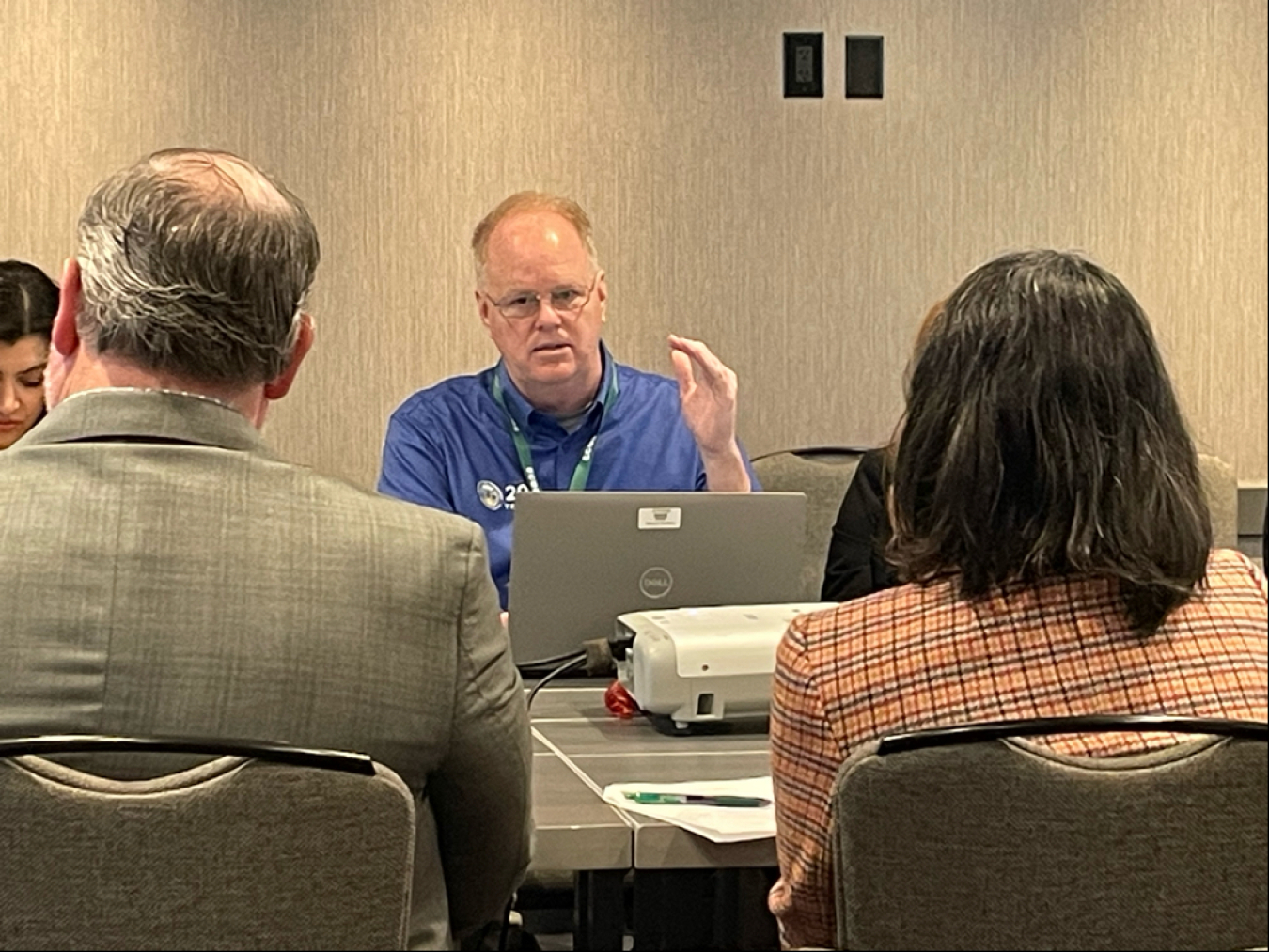Melendez, Glascock describe LM’s mission for environmental agency leaders
March 26, 2024
U.S. Department of Energy (DOE) Office of Legacy Management (LM) Director Carmelo Melendez and LM Director of Site Operations Jay Glascock addressed the Environmental Council of the States (ECOS) spring meeting in Austin, Texas, Tuesday.
Melendez said the meeting provided an invaluable forum for leaders of cleanup organizations to come together to share best practices and new technologies in environmental remediation.
“These professionals have decades of experience in cleaning up contaminated environments. It’s a rare opportunity to bring this group of experts together, and we’re thrilled to participate,” Melendez said.
ECOS is a national nonprofit, nonpartisan association of state and territorial environmental agency leaders. Its purpose is to improve the capability of state environmental agencies and their leaders to protect and improve human health and the environment in the United States.
The organization’s spring meeting, titled “Impactful Partnerships: Bigger and Better Together,” emphasized collaboration with federal and nongovernmental organizations and industry leaders through dialogue, interactive workshops, a joint problem-solving session, a site visit, and a technology fair.
LM Chief of Staff Allison Finelli and LM Education, Communication, History, and Outreach Supervisor David Von Behren also attended.
Addressing the group of state environmental directors Tuesday morning, Glascock described LM’s mission and ongoing commitment to protect human health and the environment. He discussed the growing portfolio of sites LM safeguards once cleanup organizations turn the sites over to LM for long-term stewardship.
He said LM will soon have two more sites transferred into its portfolio — the Durita disposal site in Colorado and the Tonawanda Landfill site in New York. LM currently has 102 sites in more than 30 states and territories and, Glascock said, “each site has its own set of complexities and personalities.”
“That number is expected to grow by 20 more sites over the next five years as we continuously receive legacy sites from multiple cleanup organizations, such as DOE’s Office of Environmental Management, the Nuclear Regulatory Commission, the U.S. Army Corps of Engineers, and others and under various regulatory frameworks for long-term stewardship,” he said.
LM is responsible for maintaining the continuity of stewardship while a legacy site transitions from cleanup to long-term care, Glascock said. Cleanup organizations spend a considerable amount of time, money, and effort to perform cleanup and establish long-term sustainable remedies that protect human health and the environment. LM protects those investments through active maintenance and surveillance activities, he said.
“As you can see, there is an inextricable relationship between the cleanup organization and the long-term care organization. We consider the sustainment of that relationship a best practice,” Glascock said. “On one hand, the cleanup organization builds the remedy, and on the other hand, we maintain the remedy. In the end, we both want the same thing, we inform one another, and we have the shared interest to better protect human health and the environment.”

Glascock told attendees that LM engages 25 different tribal nations, mainly located in the Southwestern United States, where uranium mining and milling operations took place during World War II and the Cold War and where residual radioactive contamination is still being cleaned.
“We formally consult with them to discuss our proposals well before we make decisions on those proposals,” Glascock said. “In some instances, the site is on tribal land, and in other cases, the site neighbors a tribal reservation. In either case, we are in constant contact with the impacted tribe.”
Glascock also discussed:
- LM’s work with Lawrence Berkeley National Lab to evaluate how potential environmental changes may impact how LM approaches monitoring, inspection, and maintenance at its sites.
- LM’s dedication to ensuring engineered disposal cells perform as designed. LM conducts annual inspections, environmental monitoring, and ensures institutional controls remain in place and are being enforced.
- LM’s focus on addressing emerging contaminants such as per- and polyfluoroalkyl substances as regulator inquiries and requirements develop.
In closing, Glascock told attendees LM is committed to long-term stewardship and the protection of public health and the environment from hazards associated with the cleanup of legacy sites that played a critical role in America’s nuclear history.
“These sites may have residual contamination or ongoing waste management responsibilities for many years, and we will be there for as long as it takes,” he said.

